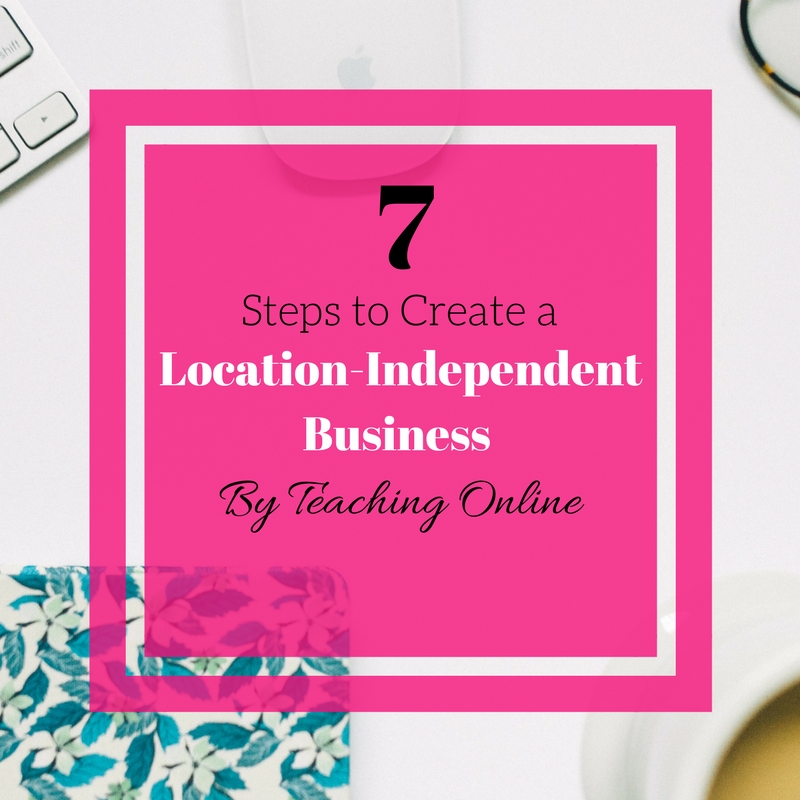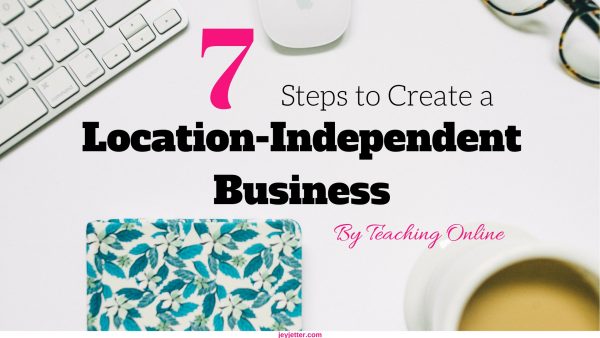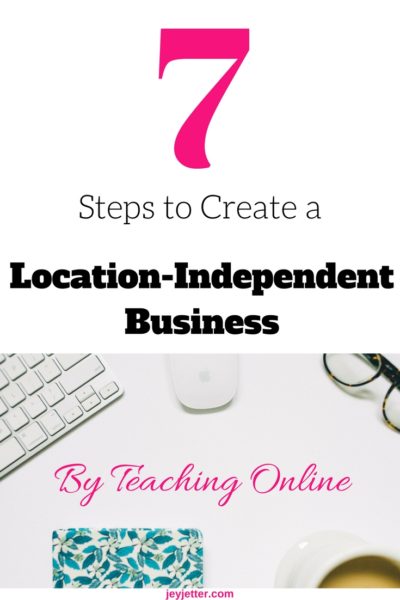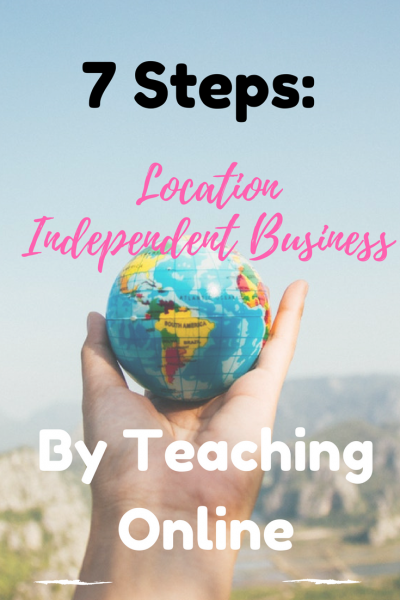There are so many ways to become a digital nomad and create a location-independent business. Teaching online is one of them. This guest post by Eduardo Yi is for all those of you who have some skills and knowledge to share and would like to know how to create an online course to become a location-independent business entrepreneur.
[clear-line]
Teaching Online: A Location-Independent Business Modell
The online course industry is exploding these days, and for a good reason. The fact that you can share your knowledge with the world and make money for example by teaching online from anywhere around the globe has driven many teachers to craft and selling an online course.
It doesn’t even matter what you will be teaching online; there’s almost certainly a market for it somewhere, so if you’ve wondered about how to start an online-course that sells, you’re in luck.
First, here’s a few reasons why you absolutely should build an online course:
- Quicker Monetization – Launching a blog or even youtube channel can take months and sometimes even years to build. With a course, you have a product ready-made that has zero inventory costs and high revenue possibilities.
- Eager Audience – If you’ve taken the time to learn something, chances are, so have a lot of other people. That means you will have a large, ready-made audience hungry for your product.
- Easily Scalable – Need more income? Re-release the course again with an extra module. With low overhead and tiny incremental costs, an online course is one of the most scalable businesses out there for digital nomads.
- Satisfying Work – You’re not just selling another done-for-you service, creating and selling a course has the potential to change lives through education.
- Perfect Brand-Builder – Many people take a long time to become an authority in their niche. Skip the line and create a course, and you can position yourself as the go-to person for this area.
Now that you’re convinced (hopefully), what do you do next? Simple. Here are seven easy steps to create your online course.
1. Explore Your Niche
I’m sure you’ve probably heard this expression before but remember: the riches are in the niches. If you want to separate yourself from the pack and really cater to a hyper-specific, underserved market, narrow down your niche into something more specific.
For instance, it may be that you are a full-time digital nomad blogger and a successful one at that. In this case, you might consider catering to a specific genre, such as developing a course for finance or education bloggers, or even beginner bloggers. You could even narrow down further and focus on beginner education bloggers.
You definitely don’t want to go too deep, but having a speciality is key to finding an underserved market that you can capitalize on.
Not into creating a location-independent business? Get my FREE guide to finding remote work instead:
2. Set Your Goals
How much do you want to make with your course? Prices, depending on expertise, can be all over the place, ranging from a couple hundred dollars to several thousand. The speciality you choose and the market you’re in can go a long way in setting these rates.
If you’re just in it for a side-hobby or you’re more interested in building an audience; in this case, consider pricing it a little lower. If you want this to be your primary source of income to fund your nomadic lifestyle, then price it a little higher. Regardless, you need to set your goals first and let the rest of your plan follow suit.
3. Find (or Build) an Audience
If you don’t have an audience already made, then you’ll need to build one. This can include running paid advertisements or creating a “lead magnet” so that people will opt-in on your mailing list.
They key is to create something of value, and continue delivering value to your audience before you eventually sell. Give, give, and give… then pitch. You have plenty of knowledge to give, so don’t be stingy with it!
Don’t lose this post – pin it for later!
4. Price It Right
What you ultimately decide to price your course it is up to you, but the key idea here is to create value. It doesn’t matter if your course is $50 or $50,000 if your students don’t feel like it is worth the money, then they won’t stick around long.
Consider also what a course like yours would go for in a physical setting. In some cases, a class on generating an e-commerce business would sell for $10,000 or more, specifically because, through the course, you will learn how to make much more. Do some research, and price accordingly.
5. Build a Sales Funnel for your Location-Independent Business
The first thing you need to do is build your foundation for the course itself, and that includes picking the platform that you want it to host on. Pick carefully, because an inferior platform will communicate to your students that the course itself is inferior.
Make sure that your course is mobile-friendly. Most likely, your students will be consuming it on-the-go, so you want to make sure that they have the capability to do so, and that the quality won’t suffer as a result.
Your sales page should have some key information: an attention-grabbing headline, a video or infographic to tease the course, explanation of the course itself, social proof, and a call to action. Make your course irresistible to potential customers, and you will have people lining up to enrol.
THESE POSTS COULD ALSO INTEREST YOU:
Want to mingle with like-minded people who already run a location-independent business?
or check out how you can earn a little extra as a digital nomad!
6. Create the Course
You may wonder why this is nearly the last step on this list. The answer is simple: there’s no reason to create anything if there are no students to buy it. Once you have the audience, however, you need to deliver in a big way.
The key to any good course is to create a transformation in the student, taking them from where they are to where they want to be. If your course is in affiliate marketing, then start with an introduction to what that is, and move them to more advanced techniques towards the end.
These days, course creation is simple too. Many of the supplies can be bought off Amazon, and freelancers are available worldwide to help with anything you may need.
7. Launch It!
Your course launch should follow a series of steps:
First, tease your course to your e-mail list. Second, answer any questions or concerns people may have about it. Then, open the doors to your students.
After that, you want to continue to answer questions that potential (and current) students have about it. Go out of your way here to be accessible; part of what people pay for is access to you, the expert.
Then throw in a bonus to entice more people to sign up and continue to convince people why your course is worth it. Finally, send out a few e-mails letting people know the doors are closing! Create a sense of urgency and grab the last few stragglers who are on the fence.
[clear-line]
There are plenty of ways to develop and launch a course, but these are the ones that I’ve found to be most successful.
What about you? If you were to create a course to teach online, what would it be about? Write back and let me know!
YOU SHOULD REALLY PIN THIS 🙂
About The Author
Eduardo Yi is the lead content marketer at Teachable, a platform that allows everyone, from creative individuals to established organizations, to easily teach online and create profitable businesses.
NOT DONE READING YET?
Perhaps you are not into teaching but you love writing? Consider having a blog instead. You can generate passive income from your site if you write about your travels or life as a digital nomad.
Or perhaps you’re still deciding if the digital nomad lifestyle is for you, read here how five years of full-time travelling have changed my life.
Either you have a location-independent business or want to work remotely as a freelancer, read this post on the gadgets and devices all digital nomads should have!




